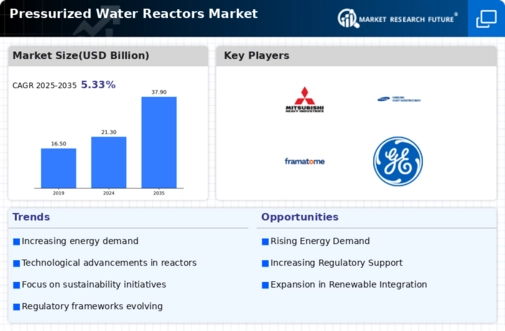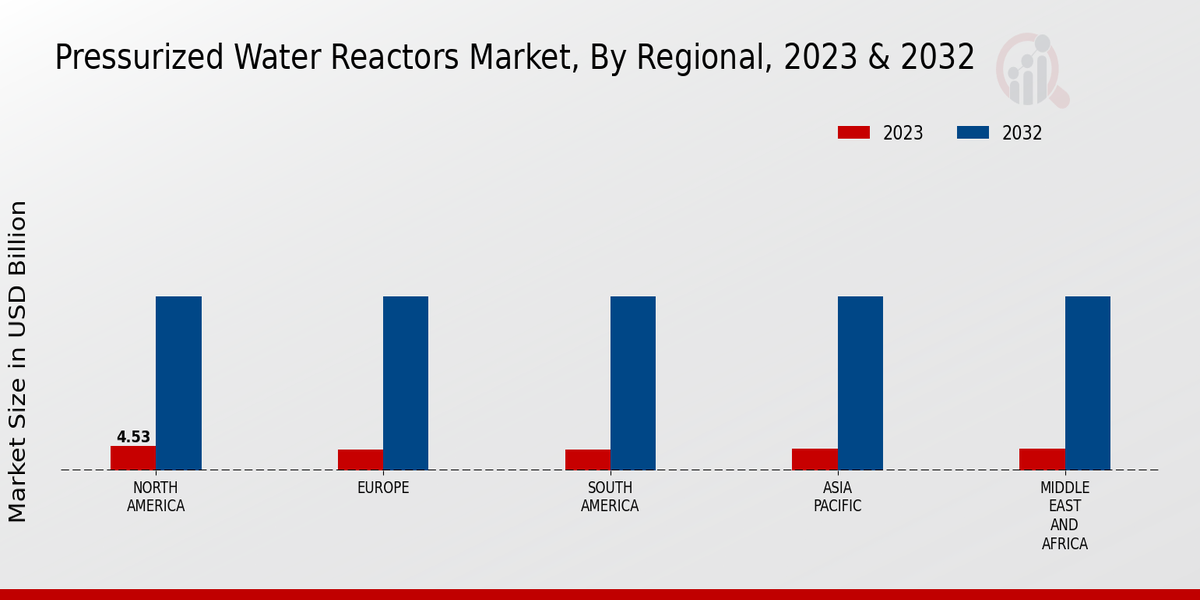Market Growth Projections
The Global Pressurized Water Reactors Market Industry is poised for substantial growth, with projections indicating a market size of 21.3 USD Billion in 2024 and an anticipated increase to 37.9 USD Billion by 2035. This growth trajectory reflects a compound annual growth rate (CAGR) of 5.35% from 2025 to 2035. The increasing demand for reliable and sustainable energy sources, coupled with advancements in reactor technology and supportive regulatory frameworks, underpins this positive outlook. As nations prioritize energy security and environmental sustainability, the market for pressurized water reactors is likely to expand significantly in the coming years.
Growing Demand for Clean Energy
The increasing global emphasis on clean energy sources drives the Global Pressurized Water Reactors Market Industry. Governments worldwide are implementing policies to reduce carbon emissions, leading to a surge in nuclear energy adoption. In 2024, the market is projected to reach 21.3 USD Billion, reflecting a strong commitment to sustainable energy solutions. Countries such as France and the United States are investing heavily in PWR technology to meet energy demands while minimizing environmental impact. This trend is expected to continue, with the market potentially reaching 37.9 USD Billion by 2035, indicating a robust growth trajectory.
Increasing Energy Security Concerns
Energy security concerns are prompting nations to diversify their energy sources, thereby benefiting the Global Pressurized Water Reactors Market Industry. Countries are increasingly recognizing the importance of nuclear power in reducing dependence on fossil fuels and enhancing energy independence. This shift is particularly evident in regions with unstable energy supplies. As nations invest in PWR technology, the market is set to grow, with an expected valuation of 21.3 USD Billion in 2024. The strategic importance of nuclear energy in achieving energy security is likely to drive further investments, potentially leading to a market size of 37.9 USD Billion by 2035.
Regulatory Support and Policy Frameworks
Supportive regulatory frameworks and policies are crucial drivers of the Global Pressurized Water Reactors Market Industry. Governments are establishing clear guidelines that facilitate the construction and operation of nuclear power plants, thereby encouraging investment in PWR technology. For instance, the U.S. Nuclear Regulatory Commission has streamlined the licensing process, making it more efficient for new projects. This regulatory clarity is expected to bolster market growth, with projections indicating a market size of 37.9 USD Billion by 2035. Such supportive measures not only enhance investor confidence but also promote the long-term viability of nuclear energy as a key component of the global energy mix.
Technological Advancements in Reactor Design
Technological innovations in reactor design enhance the efficiency and safety of pressurized water reactors, significantly impacting the Global Pressurized Water Reactors Market Industry. Advanced designs, such as the evolution of passive safety systems, improve operational reliability and reduce the risk of accidents. These advancements not only attract investments but also foster public acceptance of nuclear energy. As a result, the market is anticipated to grow at a CAGR of 5.35% from 2025 to 2035. Countries like China and Russia are leading in the development of next-generation PWRs, which could further solidify their positions in the global energy landscape.
Public Acceptance and Awareness of Nuclear Energy
Public acceptance of nuclear energy is gradually improving, which positively influences the Global Pressurized Water Reactors Market Industry. Increased awareness of the safety measures and environmental benefits associated with nuclear power contributes to a more favorable public perception. Educational campaigns and transparent communication from industry stakeholders play a pivotal role in this shift. As acceptance grows, investments in PWR technology are likely to increase, supporting market expansion. The anticipated growth trajectory, with a CAGR of 5.35% from 2025 to 2035, suggests that as public confidence in nuclear energy strengthens, the market will continue to flourish.
















Leave a Comment